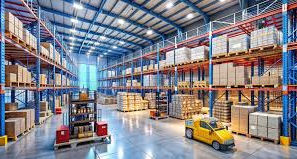top of page

All Posts


Everything You Need to Know About On-Demand Warehousing
Image Source: Freepik | Everything You Need to Know About On-demand Warehousing The necessity to adjust to Logistics 4.0 has emerged due...
Jun 243 min read


5 Practical Tips to Improve Your Distribution Center Operations
Image Source: Freepik | 5 Proven Ways to Make Your Distribution Center Run Faster and Smarter The importance of operations is typically cited as a differentiator when discussing the significance of logistics for a business. Distribution centers (DCs) play a crucial role in this context for businesses, as these physical locations allow for the strategic storing and management of product flow, which in turn provides other logistics chain operations with agility. The organizatio
Jun 173 min read


Digital Supply Chain and New Technologies
Image Source: Freepik | Digital Supply Chain and New Technologies The digital supply chain is transforming the way companies operate, and...
Jun 98 min read


Outbound Logistics: What Is It and What Is Its Importance?
Image Source: Pixabay | Outbound Logistics: What Is It and What Is Its Importance? In the supply chain, the outbound logistics phase,...
Jun 33 min read


Everything You Need to Know About Smart Warehousing
Image Source: Pixabay | Everything You Need to Know About Smart Warehousing Smart component storage for electronic board assembly is a...
May 274 min read


Mastering Demand and Inventory Planning: Essential Strategies for Success
Image Source: Freepik | Mastering Demand and Inventory Planning: Essential Strategies for Success Have you ever thought about how...
May 204 min read
bottom of page
